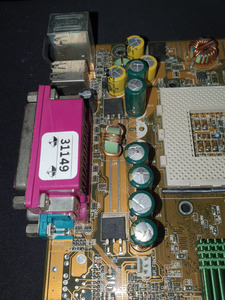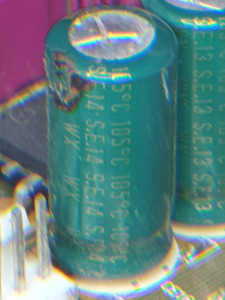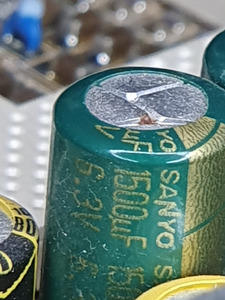First post, by Boohyaka
- Rank
- Oldbie
I've looked into recapping many motherboards over the years but always delayed it in the end, just set them aside to fix them "later". Now I'm ready to get into it.
I've searched vogons and the internet on information about how to choose the right capacitors and I'm a bit overwhelmed with the information. It's one of these subjects where it seems everyone has a different opinion, often insubstiantiated any more than "trust me bro", and going to mouser.com I'm also overwhelmed by the offer...And I'm pretty sure that as usual, I'm overthinking it because it's new to me and don't want to make mistakes.
So I guess I'd just like some confirmation about a few factoids I'll write down, and that my current choice makes sense. For context I'm really looking into motherboards only at the moment (understand soundcards are more sensitive and require audio grade capacitors, that's not the case here). Also, I want to fix motherboards with caps that already leaked (or obviously bulging), I'm not trying to fix things that aren't broken, and I understand I should change all caps of a particular group even if some have not (yet) leaked. Let's use my first real-life case here: an ASUS A7A266 where I need to change 6x 1500µF/6.3V and 3x 680µF/6.3V caps.
- I've read about Japanese brands being the most recommended. Nichicon, Rubycon. Still accurate? Other notable mentions?
- Physical size is obviously important (close to the original ones)
- Capacitance should ideally be the very same rating, but voltage can be higher. Makes sense to me as it is a max V rating, so getting a highest rating for a similar capacitance is no issue.
- Current caps are rated for 105°, so I'll stick to the same.
- Some people recommend grabbing Aluminum Organic Polymer capacitors instead of electrolytics. Apparently they don't leak, last longer and have the advantage of very low ESR. Also read that if going that route I should take lower capacitance rating? (that's all from memory so maybe I'm confusing different things, sorry). From my quick checks it seems the prices are pretty similar. Is that good advice, and any good reason to make that choice? Feels to me that if I can find similarly rated eletrolytics capacitors I'm taking no risk and I'll be good for the next 20+ years anyways...
- A lot of Nichicon caps I'm looking for on mouser are classified as "low impedance". From more searches it seems it's particularly important for PSU's? Should I be looking for general purpose or any other type of capacitors to have them cheaper, or it doesn't really matter?
- Any other specs I need to look out for? Lower ESR = better? What about the "ripple current" rating, is it important?
I think that's it to start...so here's what I'm looking at right now (focusing on Nichicon to reduce the scope of search results 😁):
- 1500µF/6.3V: https://www.mouser.ch/ProductDetail/Nichicon/ … 2F01acxtg%3D%3D
- 680µF/6.3V: https://www.mouser.ch/ProductDetail/Nichicon/ … PzCrlBYOg%3D%3D
Are these good choices in this situation? I'd be happy to get other recommendations, if possible with the explanation that goes with it so I try and learn something useful 😀
Thanks!





